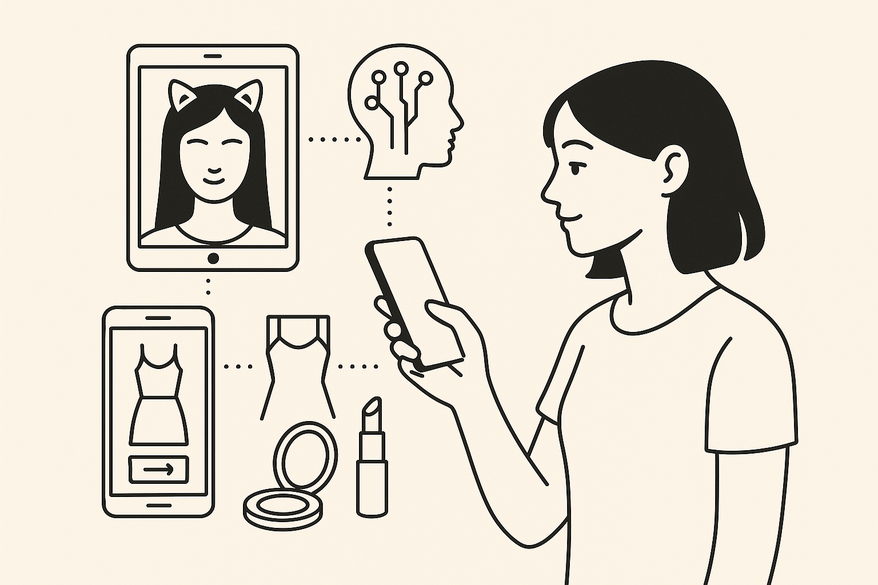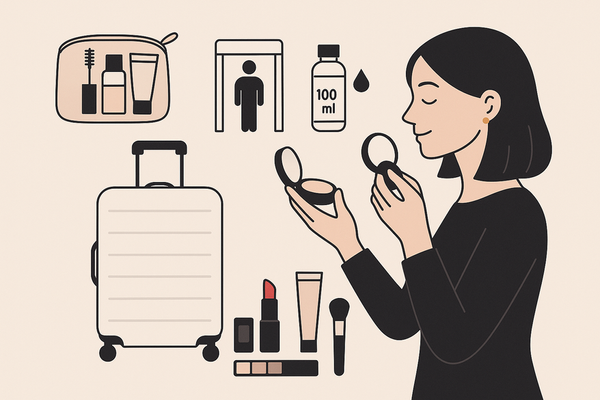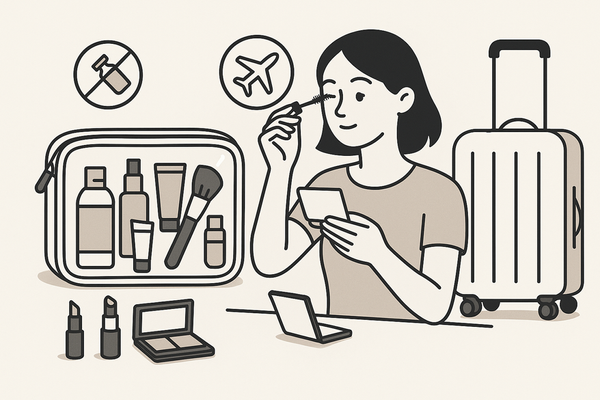Harnessing Digital Beauty Fashion Synergy: How Tech Is Transforming Style & Aesthetics
Explore how digital beauty fashion synergy and technology like AI, AR, and social commerce are transforming style, enhancing consumer experiences, and fostering innovation.

Estimated reading time: 10 minutes
Key Takeaways
- Emerging technologies like AI, AR/VR, and social commerce are revolutionizing beauty and fashion.
- Collaborations between beauty and fashion brands foster deeper customer engagement and loyalty.
- Data-driven personalization enhances experiences with tailored recommendations and virtual consultations.
- Integrated campaigns and live commerce events drive significant sales uplift.
- Future innovations include generative AI, advanced VR, and biometric personalization.
Table of Contents
- Defining Key Concepts of Digital Beauty Fashion Synergy
- Brief History of Digital Innovation
- The Digital and AI Revolution in Beauty and Fashion
- Major Trends
- How CX Has Been Reshaped
- Examining Synergy Between Beauty and Fashion
- Convergence in Action
- Integrated Campaign Examples
- Mutual Benefits
- Case Studies: Digital Beauty Fashion Synergy in Action
- Case Study 1: AI & Dynamic Content Platforms
- Case Study 2: Cross-Industry Influencers
- Case Study 3: Social Commerce Livestream Events
- Challenges
- Success Strategies
- Future Trends: Emerging Technology and Synergy
- Practical Insights: Actionable Tips for Digital Beauty Fashion Synergy
- Further Reading/Resources
- Conclusion: Embracing Digital Beauty Fashion Synergy
Defining Key Concepts of Digital Beauty Fashion Synergy
In this section, we define the building blocks of synergy between beauty and fashion through digital innovation.
- Digital – Technologies such as the internet, social media, AI, AR, and VR that enhance marketing and consumer interactions (beauty marketing trends).
- Beauty – Skincare, cosmetics, and services focused on aesthetics and wellness.
- Fashion – Apparel and accessories as creative expression and commercial goods.
- Synergy – The amplified effect of combined beauty and fashion efforts via digital tools (fashion beauty marketing trends).
Brief History of Digital Innovation
- Past Decade – Rise of online stores, influencer marketing, and social-media campaigns (Emerging beauty trends).
- Today – Data-driven personalization and omnichannel engagement dominate (Emerging beauty trends).
The Digital and AI Revolution in Beauty and Fashion
This section explores how advancements in AI, personalization, and AR/VR are transforming customer experiences in beauty and fashion.
Major Trends
- Social Media & Influencer Marketing
Real-time product launches on TikTok and Instagram, live shopping streams, and viral campaigns accelerating growth (fashion beauty marketing trends). - E-commerce & Social Commerce
Direct-to-consumer models, shoppable posts, and live-stream events driving instant purchases (fashion beauty marketing trends). - AI & Personalization
AI quizzes match consumers with optimal products, dynamic user journeys manage product overload (Top Beauty Trends Report, Emerging beauty trends). For a deeper look at how AI-driven beauty apps can personalize routines and provide virtual consultations, see AI-driven beauty apps. Tools like Makeup Check AI illustrate this synergy in action. - AR/VR
Virtual try-ons for makeup and clothing improve purchase confidence (virtual try-on tech), while immersive fashion shows break geographic barriers (Emerging beauty trends).
How CX Has Been Reshaped
Beauty
– Customized skincare routines with AI-driven analysis.
– Virtual consultations bridging in-store and online experiences (Top Beauty Trends Report, Emerging beauty trends).
Fashion
– AR-powered virtual stylists suggesting outfits and accessories.
– Interactive fittings reducing returns and boosting satisfaction.
Examining Synergy Between Beauty and Fashion
This section analyzes how collaboration via digital channels boosts engagement and loyalty.
Convergence in Action
- Coordinated influencer campaigns featuring full transformations, from skincare routines to outfit reveals (beauty marketing trends).
Integrated Campaign Examples
- Beauty and apparel capsule collections sold through interactive live shopping events (fashion beauty marketing trends).
Mutual Benefits
- Enhanced Customer Engagement – Multi-touchpoint experiences keep audiences immersed.
- Increased Brand Loyalty – Personalized journeys build trust and repeat purchases.
- Broader Market Reach – Combined consumer bases open new demographics.
Case Studies: Digital Beauty Fashion Synergy in Action
Real-world examples driving measurable results.
Case Study 1: AI & Dynamic Content Platforms
- Brands using Klaviyo and Dynamic Yield deliver hyper-personalized emails and site experiences.
- Result: 20–30% lift in conversions and surge in repeat business (Top Beauty Trends Report).
Case Study 2: Cross-Industry Influencers
- Fitness influencers pivot to beauty and fashion collaborations.
- Deeper storytelling and relatability lead to higher engagement (beauty marketing trends).
Case Study 3: Social Commerce Livestream Events
- Combined fashion and beauty product launches in real time.
- Outcome: Significant sales uplift and community growth (fashion beauty marketing trends).
Challenges
- Maintaining authenticity at scale.
- Channel saturation and content overload.
- Data privacy and security concerns (State of Beauty insights).
Success Strategies
- Genuine storytelling aligned with brand values.
- Engaging multi-purpose influencers across platforms.
- Hybrid organic-paid approaches to maximize reach.
Future Trends: Emerging Technology and Synergy
Upcoming innovations that will deepen digital beauty fashion synergy.
- Generative AI for custom product design.
- Advanced VR for immersive virtual stores.
- Biometric personalization measuring skin and body metrics (Emerging beauty trends).
Next-Gen Experiences
– Virtual pop-up shops offering timed exclusives.
– 3D avatar styling tools merging data with fashion and beauty advice (Emerging beauty trends).
Preparation Advice
– Invest in agile digital infrastructure.
– Embrace data-driven innovation to stay ahead (State of Beauty insights).
Practical Insights: Actionable Tips for Digital Beauty Fashion Synergy
Clear steps brands can take today:
- Invest in AI-Driven Personalization
Deploy AI quizzes, recommendation engines, and predictive analytics (Top Beauty Trends Report). - Foster Cross-Sector Partnerships
Collaborate with complementary beauty and fashion brands or influencers for joint product launches. - Leverage Social Commerce Platforms
Optimize shoppable posts with clear product tagging and host live shopping events (fashion beauty marketing trends). - Prioritize Authentic Storytelling
Use educational content to inform and entertain, countering ad fatigue (beauty marketing trends).
Further Reading/Resources
- Evolut Agency report on beauty trends
- Exploding Topics on emerging beauty innovations
- McKinsey’s State of Beauty insights
Conclusion: Embracing Digital Beauty Fashion Synergy
Digital beauty fashion synergy is more than a buzzword—it’s a strategic imperative for brands seeking to lead in engagement, loyalty, and growth. By integrating AI, AR, and social commerce, brands can craft seamless, personalized experiences that resonate with modern consumers. Embrace this synergy to unlock new markets, strengthen brand affinity, and drive lasting success. We invite you to share your own experiences implementing digital beauty fashion synergy in the comments below.
FAQ
What is digital beauty fashion synergy?
Digital beauty fashion synergy refers to the collaborative integration of beauty and fashion industries through digital technologies—such as AI, AR/VR, and social commerce—to create unified experiences that exceed the impact of each sector alone.
How can AI enhance personalization?
AI analyzes user data to deliver tailored product recommendations, interactive quizzes, and dynamic user journeys, ensuring consumers find the right products and enjoy a customized shopping experience.
Why are AR and VR important for customer experience?
AR and VR enable virtual try-ons, immersive showrooms, and interactive fittings, which boost purchase confidence, reduce returns, and seamlessly blend physical and digital interactions.
What future trends should brands prepare for?
Brands should explore generative AI for custom product design, advanced VR for immersive virtual stores, and biometric personalization that tailors experiences based on individual skin and body metrics.




